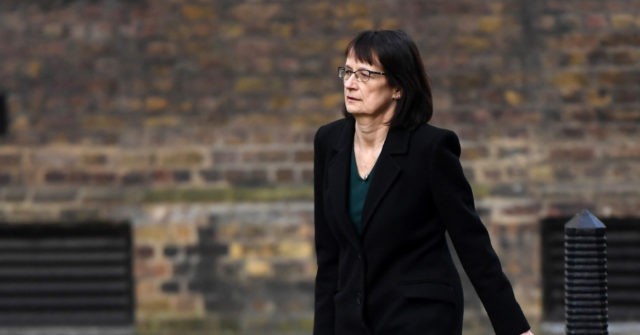
A UK government health chief has actually come under heavy fire in a normally government-loyal broadsheet paper over her controversial analysis of Chinese coronavirus hospitalisation data.
Dr Jenny Harries, the president of the UK Health Security Firm (UKHSA), has drawn scrutiny over her “dodgy” description of COVID hospitalisation information offered to UK Health Secretary Sajid Javid.
Harries is thought to have been the source for the concept that there is typically a 17-day lag in between being contaminated with the coronavirus and being hospitalised with the illness, a claim that was later on utilized by the Health Secretary to make a case for more lockdown restrictions.
Nevertheless, according to a report by the The Telegraph, the 17-day figure given by Harries has been criticised as being “generous”, with officials at the UKHSA informing the typically government-friendly broadsheet that the existing lag in between infection and hospitalisation is thought to be roughly 12 days.
The challenged claim made by Mr Javid was extensively seen as an effort to enhance the case for immediate brand-new COVID-19 limitations, on the basis that the country might be on the brink of a significant spike in hospitalisations due to the omicron variant of the virus.
Information from the government’s Office for National Statistics (ONS) has likewise called into question the 17-day lag, with analysis conducted by previous treasury statistician Simon Briscoe recommending that the hold-up between infection and hospitalisation stands at an average of 10 days.
Speaking on the inconsistency, Briscoe called using the “dodgy” 17-day figure as either a “intentional statistical sleight of hand developed to deceive, or incompetence”.
Briscoe went on to say that if the move was intentional, it would recommend that the government was “in impact shopping time, as officials understand that data of rising hospitalisations is needed to justify lockdown.”
“The distinction of a week in the lag in between infection and hospitalisation is very important because if you believe the ONS numbers, you would already anticipate hospitalisations to be picking up rather more sharply than they are,” Briscoe stated.
“Hospitalisations will need to be above (most likely well above) the averages of recent months to validate lockdown,” he included.
“Could it simply be the case that hospitalisations, severe health problem and deaths are not following the cases figure upwards, as taken place in South Africa?” Briscoe went on to ask.
UK to Consider Imposing New Lockdown Rules as Early as Next Week: Reporthttps://t.co/BcsJ4ID0fj
— Breitbart London (@BreitbartLondon) December 25, 2021
Harries is not the only federal government scientist to come under fire in current days.
The Scientific Advisory Group for Emergencies (SAGE)– which recommends the federal government in relation to the Chinese Coronavirus– was accused of releasing end ofthe world predicting product over just recently released modelling.
SAGE modelling forecasted that hospitalisations due to the omicron variation could strike 10,000 a day in the UK, while daily deaths might vary from 600 to as high as 6,000.
Senior Conservative backbencher Sir Charles Walker criticised using “ultra-worst case circumstance modelling” by government experts, saying that it has actually weakened public trust in science and scientists.
Harries herself likewise drew criticism as being “too dismal”, to which she firmly insisted that her stance was warranted as omicron is a “major hazard”.
“So those who understand me understand I’m a naturally positive individual, so I normally hold on to the positives,” Harries stated. “But I think what we have actually seen with omicron is something actually rather unusual.”

